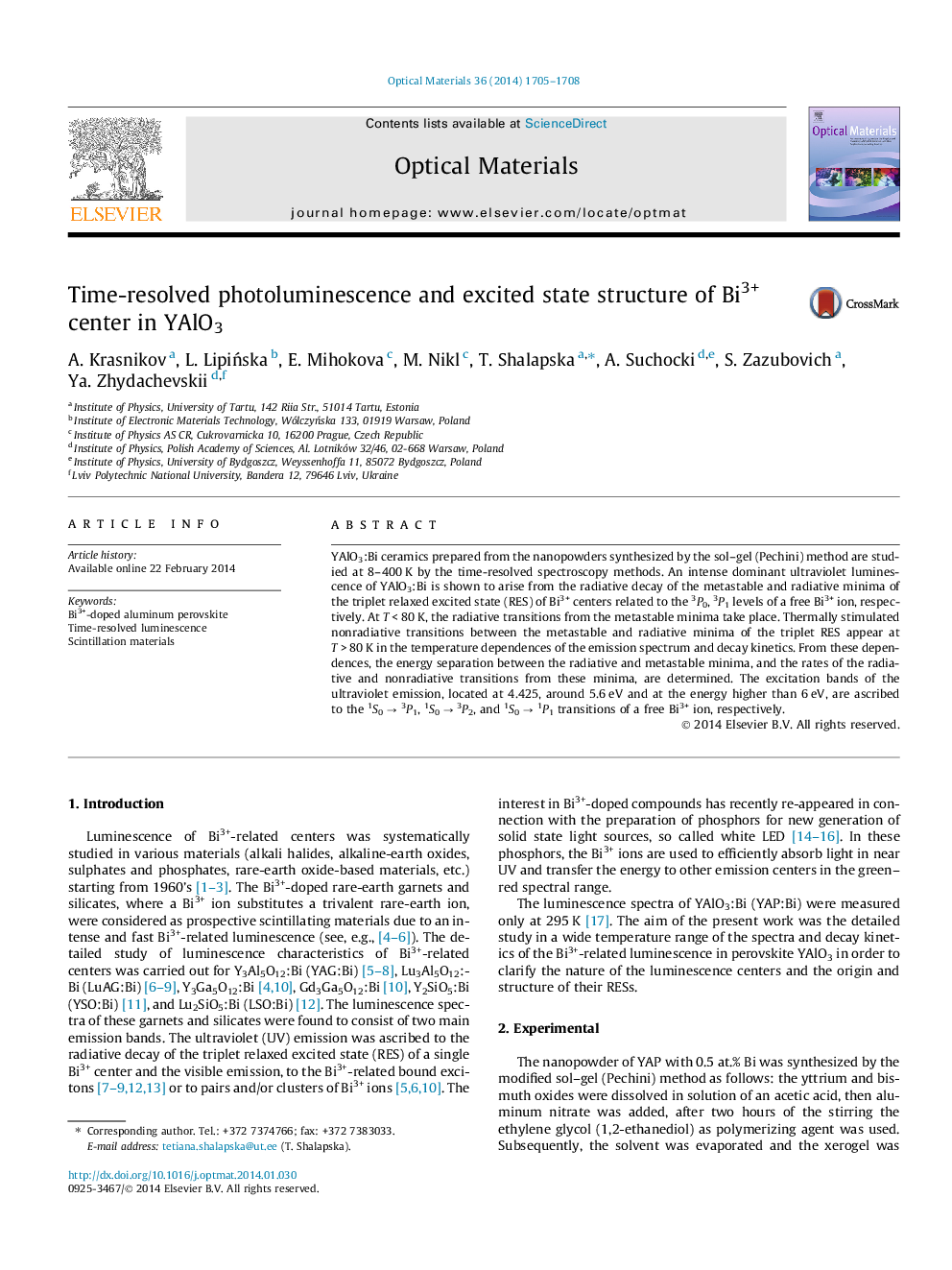| Article ID | Journal | Published Year | Pages | File Type |
|---|---|---|---|---|
| 1494419 | Optical Materials | 2014 | 4 Pages |
•Luminescence spectra and decay kinetics for YAlO3:Bi3+ at 8–400 K reported.•The ultraviolet (UV) emission only present in the spectrum of YAlO3:Bi3+.•The UV emission due to the triplet relaxed excited state (RES) of a Bi3+ ion.•The Bi3+ excited states dynamics and triplet RES parameters modelled.•Scintillation efficiency of YAlO3:Bi3+ is of 35–40% of that of BGO.
YAlO3:Bi ceramics prepared from the nanopowders synthesized by the sol–gel (Pechini) method are studied at 8–400 K by the time-resolved spectroscopy methods. An intense dominant ultraviolet luminescence of YAlO3:Bi is shown to arise from the radiative decay of the metastable and radiative minima of the triplet relaxed excited state (RES) of Bi3+ centers related to the 3P0, 3P1 levels of a free Bi3+ ion, respectively. At T < 80 K, the radiative transitions from the metastable minima take place. Thermally stimulated nonradiative transitions between the metastable and radiative minima of the triplet RES appear at T > 80 K in the temperature dependences of the emission spectrum and decay kinetics. From these dependences, the energy separation between the radiative and metastable minima, and the rates of the radiative and nonradiative transitions from these minima, are determined. The excitation bands of the ultraviolet emission, located at 4.425, around 5.6 eV and at the energy higher than 6 eV, are ascribed to the 1S0 → 3P1, 1S0 → 3P2, and 1S0 → 1P1 transitions of a free Bi3+ ion, respectively.
